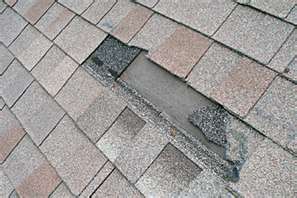Quick Fixes for a Leaking Roof
 We have all awoke in the middle of the night during a storm and wondered if the roof is holding on. Well in many cases the answer is no its not. If you are like the thousands of folks who experience small sotrm related roof damage every year this guide by Roofing Tutor will be worth your time to read. Quick fixes are not meant in most cases to be permanent. These steps are a stop gap till better weather conditions allow you to safetly inspect and repair the damage.
We have all awoke in the middle of the night during a storm and wondered if the roof is holding on. Well in many cases the answer is no its not. If you are like the thousands of folks who experience small sotrm related roof damage every year this guide by Roofing Tutor will be worth your time to read. Quick fixes are not meant in most cases to be permanent. These steps are a stop gap till better weather conditions allow you to safetly inspect and repair the damage.
What happens when a strong wind storms blows shingles off your roof and then the following torrential rain starts leaking into your home? What do you do with more storms in the forecast while you wait for the repairman? The key is to get the damaged portions of your roof covered until a roofing contractor can get there to repair the damage. Here are the top quick fixes for a leaking roof while you wait for the repairman.
Roofing Tar
When a few shingles are torn off, a bucket of roofing tar may be sufficient. Use a wide knife like a drywall knife and spread a generous amount of tar over the area missing the shingle. Overlap the tar onto neighboring shingles in order to completely seal the area. If done correctly, this roofing quick fix can last a month or longer.
Roofing Cement
Roofing cement may be used in place of tar on small patches. In addition, it can be used to patch damaged flashing around a chimney or against a second-story wall. Use a generous amount of cement. The flashing will have to be replaced, but roofing cement works as a short-term fix. Expect a roofing cement patch to last up to a month, though shorter in cold weather. There are other liquid roofing materials on the market with good elasticity that also work well. For step by step suggestions on how to work with these products read Your Best Defense.
Thick Plastic or Tarps
If a large group of shingles has been blown off of if the damage is widespread, you’ll need to cover the entire area with heavy-gauge plastic or tarps. Keep in mind that for the covering to be effective, it must go up and over the peak of the roof. Otherwise, rainwater will simply run under the covering and penetrate the roof at the damaged spots.
Use bricks or sand bags to hold down plastic. Tarps can be held down by cords or rope. Tarps can also be nailed to the roof as long as the nails are placed under shingle tabs in good condition. Drive the nail through the metal rings on the tarp edge. Drive a 3” nail about 2” in and bend the top of it over to secure the tarp. You don’t want to put a hole through the top of a shingle and into the roof. It will provide a channel for water leaking into your home.
It is important to make sure the entire perimeter of the tarp is held down firmly so that wind doesn’t turn it into a large sail and blow it off the house. Even if a flap or two is loose, wind-driven rain can get under it and cause significant damage.
Plastic sheeting on a roof may be expected to last for a few days up to a week or two, depending on wind conditions. A well-secured tarp may last 2-3 months or more, though it may need to be patched if it is torn by wind or falling debris. For step by step instructions Lowes has a PDF on Roof Tarping.
A Note about Insurance
Getting your roof quickly covered while you wait for the roofer will reduce the possibility of additional damage to your roof or home. It may also save you from a disputed or rejected claim from your insurer. Most policies state that secondary or subsequent damage may not be covered if the homeowner did not act in a timely way to cover the damaged area. Read what U.S. Exteriors says about the general process for filing an insurance claim.
This doesn’t mean you should rush out in a lightning storm to cover your roof. It does mean that when conditions are safe, getting the roof covered should be a high priority.
Summary
When your roof is leaking, light a fire under your roofer to get him moving your way. Then use tar, roofing cement, tarps and plastic to adequately cover the roof until it can be permanently repaired. Above all else never rush and always be safe when working on a roof.
